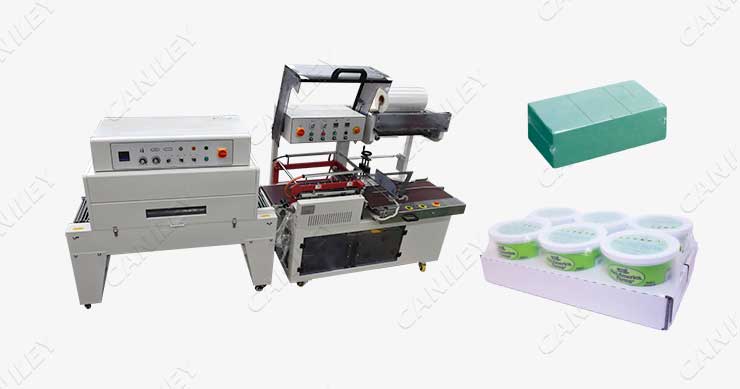In the fast-paced world of manufacturing and logistics, efficient packaging solutions play a pivotal role in ensuring products reach consumers in pristine condition. One such solution that has gained significant traction is the shrink wrapping. This innovative packaging solution has revolutionized the packaging industry by streamlining the process of wrapping products in a protective, tamper-evident, and visually appealing manner. But what machine is used for shrink wrap? Usually an automated shrink wrapping machine is used.

The basics of shrink wrapping:
Before diving into the specifics of shrink wrapping machines, let’s understand the basics of shrink wrapping. Shrink wrapping is a packaging process that involves encasing products in a plastic film that, when heated, shrinks tightly around the items, conforming to their shape and creating a secure, sealed package. The result is a neatly packaged product that is protected from dust, moisture, and tampering.
The rise of automation:
Automation has become a driving force behind increased efficiency and cost savings in various industries, and packaging is no exception. Manual packaging processes can be time-consuming, labor-intensive, and prone to inconsistencies. This is where automatic shrink wrapping machines come into play. These machines are designed to automate the entire shrink wrapping process, from feeding the product to sealing and shrinking the film.
Key components and features:
Automatic shrink wrapping machines are equipped with a range of components and features that ensure a seamless packaging process:
1. Conveyor system: These machines often feature a conveyor system that transports the products to be wrapped. This helps in maintaining a continuous flow of products, reducing downtime, and increasing productivity.
2. Film dispensing system: The machines are designed to dispense and position the shrink film accurately around the products. This eliminates the need for manual handling and ensures consistent packaging.
3. Sealing mechanism: The sealing mechanism securely seals the edges of the film together, creating a protective package. Some machines use heat to melt the film edges, while others use adhesive or other sealing methods.
4. Heat chamber: The heat chamber is a crucial component that subjects the packaged products to controlled heat, causing the shrink film to contract and tightly wrap around the products.
5. Control system: Modern automatic shrink wrapping machines are equipped with user-friendly control interfaces that allow operators to adjust settings, monitor the packaging process, and troubleshoot issues.
6. Customization options: These machines can handle a wide range of product sizes and shapes, making them versatile for various industries. Some machines allow for adjustment of film tension and sealing parameters to accommodate different product specifications.
7. Safety features: To ensure operator safety, automatic shrink wrapping machines are equipped with safety features like emergency stop buttons, protective enclosures, and sensors that detect any anomalies during the packaging process.
Advantages of shrink wrapping machines:
- Enhanced efficiency: By automating the packaging process, these machines significantly increase packaging speed and throughput, reducing the time required for packaging large quantities of products.
- Consistency and quality: Automatic machines eliminate human error and variations in packaging, resulting in consistently high-quality packaging for each product.
- Cost savings: While the initial investment in an automatic shrink wrapping machine might be higher, the long-term cost savings from reduced labor and material wastage can be substantial.
- Tamper-evident packaging: Shrink wrapping provides tamper-evident packaging that enhances product security and consumer confidence.
- Improved aesthetics: Shrink-wrapped products have a neat and visually appealing appearance that can influence consumer purchasing decisions.
In conclusion, shrink wrapping represent a significant advancement in the world of packaging. Their ability to automate and optimize the packaging process, coupled with the advantages of efficiency, consistency, and product protection, makes them an indispensable asset for modern manufacturing and distribution operations.
